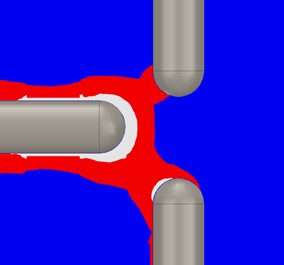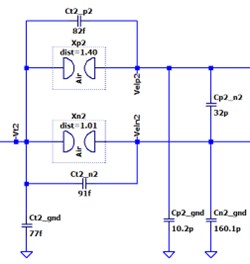My assignment was to develop a medical device with a shock wave triggered by a fast spark gap. Several spark gaps are installed in the device, which are supposed to ignite with a time difference of a few milliseconds.
The existing design of the spark gaps and the associated high-voltage unit showed two undesirable effects that should be avoided in the future.
On the one hand, the positive voltage applied to the discharge capacitor was pulled to ground potential during the spark gap triggers. Therefore, twice the voltage was present at the negative terminal of the capacitor. This led to the destruction of the connected electronic components. Analysis with a geometric electrostatic simulation and a dynamic simulation with SPICE brought clarity. The problem was incomplete ignition of the spark gap. As a simple solution I presented a repositioning of the trigger electrode, which underpins the positive effect with simulation. For series production of the devices, I proposed a robust holder for the electrodes.
I also investigated the second unwanted effect, the simultaneous but unwanted ignition of the neighboring spark gaps, with a SPICE simulation. The oscillating nature of the discharge current resulted in overloading of a central element of the high-voltage unit. I recommended a better spatial separation and shielding of the electronics for the two spark gaps as a solution.
Currently, the proposed modifications are in the testing phase.


Targets and key figures


September – November 2022

Budget 10’000 CHF

Independent project work

Medical Technology




